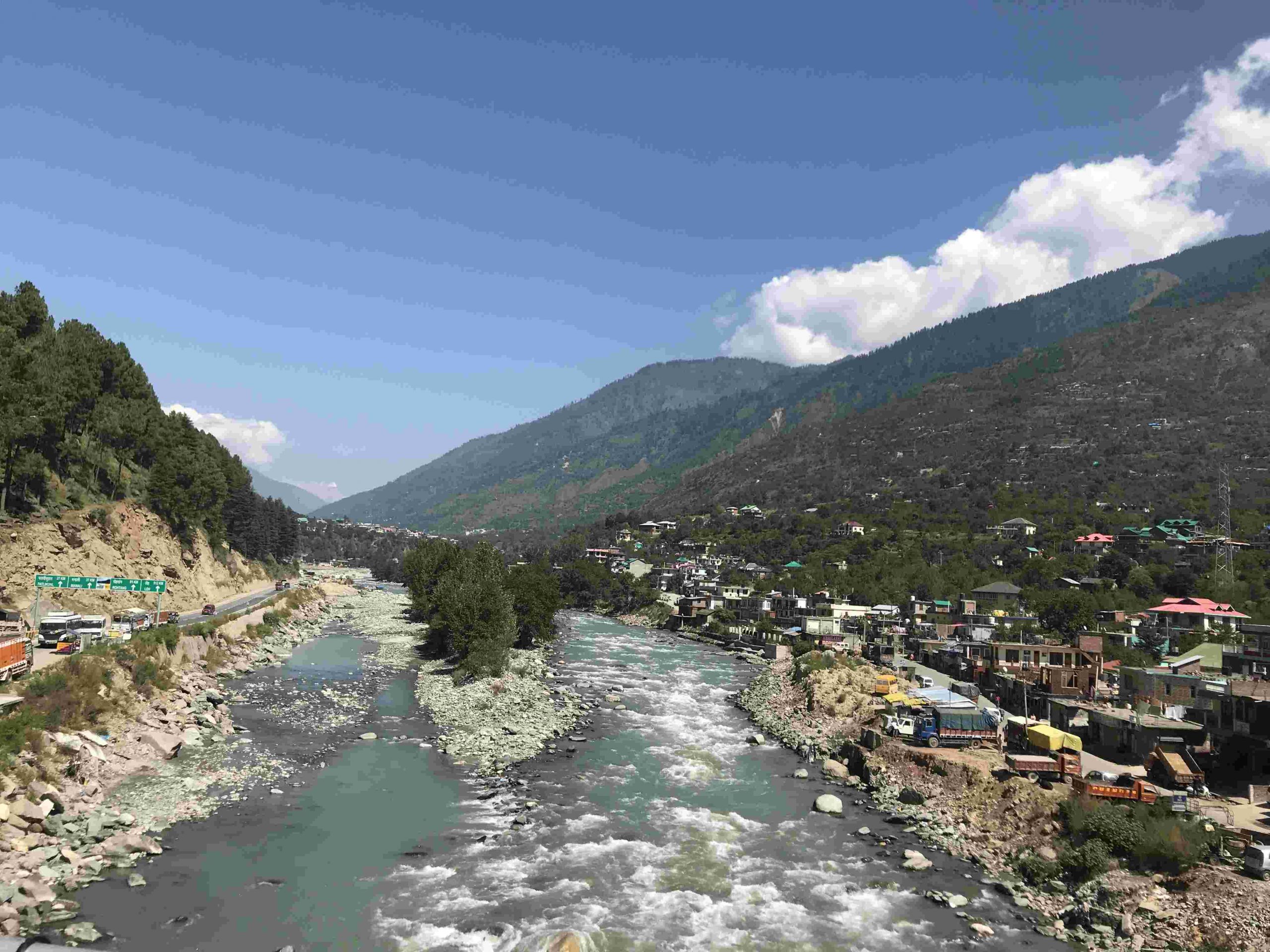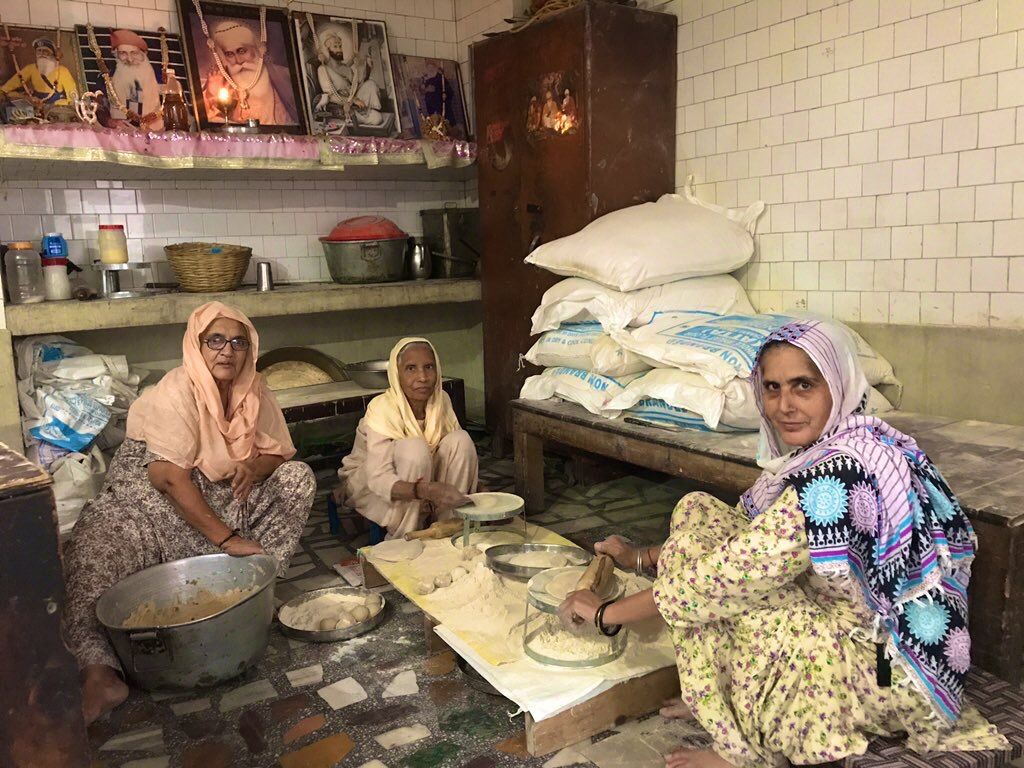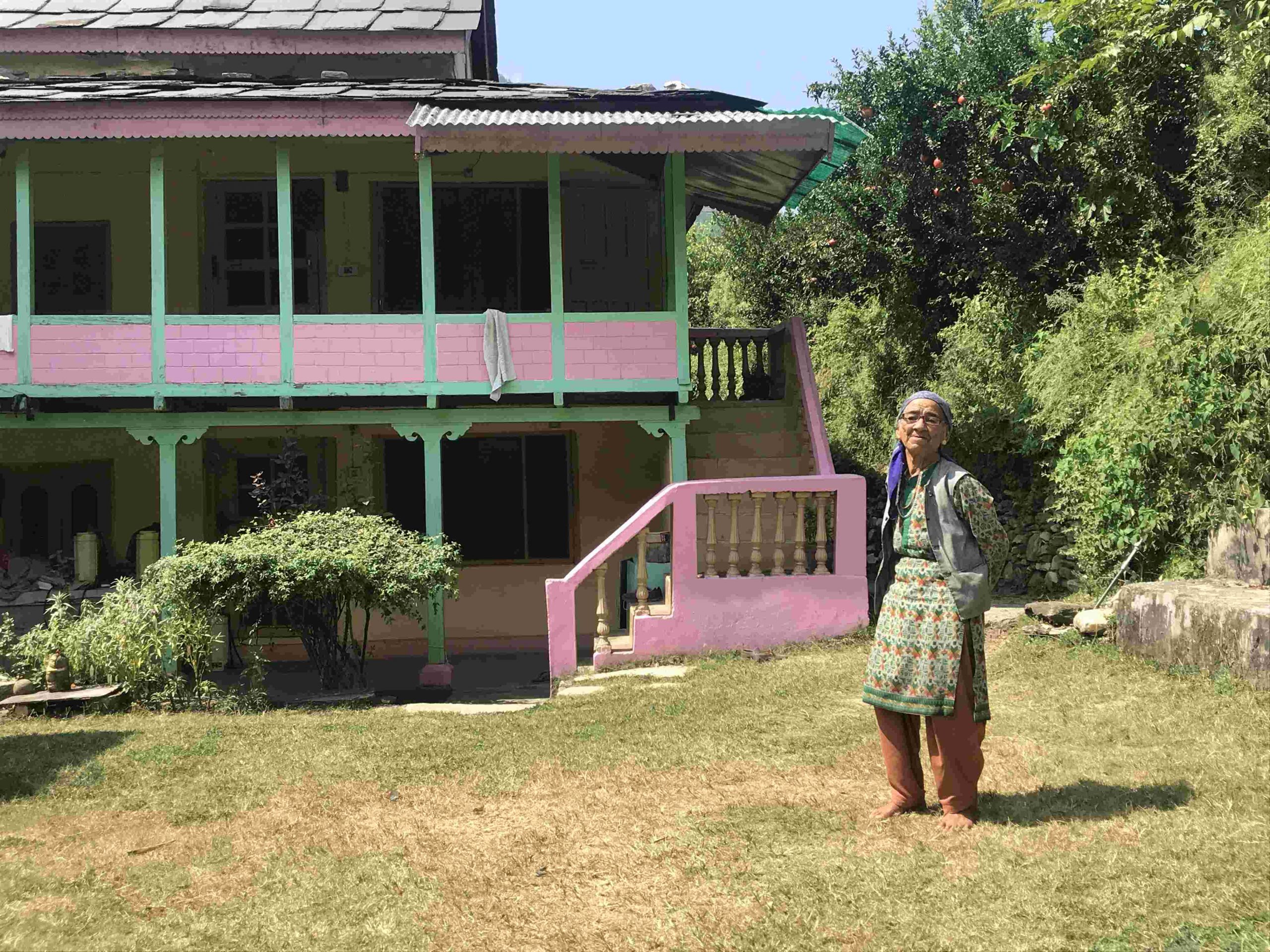Climate change hits Himachal’s famous apples, causes the of frequent floods
Kullu in Himachal is identified as highly prone to floods. But, the Centre is yet to release required funds for an early warning system. Rising heat, reduced winter chill have wiped off many apple orchards

Kullu, Himachal Pradesh
Twenty-six-year-old Hemraj has no memory of his parents. He was nine months old, when his parents, residents of Shat village in Kullu district of Himachal Pradesh, were washed away in one of the worst flash floods the district has ever experienced.
“My father, Puran Chand, used to work with the electricity board. I have only heard stories of the fateful day when water in the river rose by over 100 feet [30 metres] and swept away people, including my father and mother,” said Hemraj, who has an elder brother and an elder sister. All three siblings were raised by their paternal grandparents.
Apart from Hemraj’s parents, 25 more people in Shat village lost their lives when a cloudburst on July 11, 1994, lead to unprecedented flash floods in the district.
Kullu district is identified as a climate hotspot and the most flood-affected district in the state. Between 1950 and 2014, 40 per cent of the total flood events in Himachal Pradesh occurred in Kullu district. Since 1965, the district has faced at least 66 flood events. But, an early warning system for such disasters is yet to be put in place. Recommendations for such a warning system and mitigation measures are still languishing in official files.
The cloudburst and flash floods of July 11, 1994, remain one of the worst disasters in the state. And, 25 years later, survivors still find it difficult to recount the horror of high-velocity floodwaters washing away people, houses, bridges and land in a matter of minutes.
“We had never experienced such heavy rainfall or destructive flash floods. Our parents had also not witnessed anything like that before,” 56-year-old Kamal Chand, former baarh panch (flood management head) of Shat village told Gaon Connection. “On July 11 [1994], it started to rain around 1 pm. By 3 pm, the rainfall was extremely heavy and within an hour, we had flash floods, bringing floodwaters, debris, stones and uprooted trees from over 20 kilometers upstream,” he narrated.
According to him, the wind speed was so high that trees and houses were blown away.

“There was no time to rescue people as within a minute the floodwaters washed away everything. Screaming, shouting and warning people had little effect, as the noise of floodwaters was deafening,” recounted Mohinder Singh, who was 16-year-old when the disaster struck Shat village. He lost two uncles and his sister in the flash flood. Their bodies were never found. Some other bodies were found over five kilometres downstream.
The state government is aware of the climate risks the Himalayan state is facing, including climate-related risks in Kullu district. Department of Environment, Science & Technology is the nodal agency to look into climate change-related issues in the state. The department has bilateral technical co-operation with the Swiss Agency for Development and Cooperation (SDC), which is implementing the Indian Himalayas Climate Adaptation Programme (IHCAP) in the state.
“Under phase one of this programme covering 2012 to 2015, we have jointly carried out three studies in Parvati Valley, Banjar Valley and Greater Himalayan National Park to study the impacts of climate change and suggest mitigation techniques and recommendations for adaptation,” informed BC Thakur, deputy coordinator with Himachal Pradesh Knowledge Cell on Climate Change under the department of environment.
“In our report, we have recommended a few measures including zonation of flood-prone areas and an early warning system in Kullu district. For the same, we require Rs 20 crore, whose request [for part funding] has been sent to the Centre. But, we are yet to receive the funds,” added Thakur.
Meanwhile, phase two of IHCAP is already underway and aims to implement the recommendations of the three studies carried out in phase one of the programme.
Flash floods and rising heat in Kullu
Under IHCAP, a pilot study was conducted in Kullu district to provide an integrated assessment of climate vulnerability, hazards and risks. In its report, published in 2016, it has identified various climate-related risks in the district.
One such risk is the glacial lake outburst flood (GLOF), which lead to the 2013 Kedarnath disaster (and possibly the 1994 flash flood). The district is also categorized in the ‘very high’ risk category of cloudbursts.
Simply put, GLOF refers to flash floods caused by the outburst of glacial lakes. Such floods are well known in the Himalayas where such lakes are often formed by landslides. GLOFs have immense potential of flooding in downstream areas, causing disastrous consequences due to the release of large volumes of water in the very short interval of time, notes the Central Water Commission under the Ministry of Jal Shakti.

The IHCAP 2016 report notes: “A complete GLOF risk assessment has been conducted at the tehsil-scale for the Kullu district. It shows that the greatest GLOF threats originate from the heavily-glaciated Parvati Valley, with large events potentially reaching the heavily populated downstream areas of the Kullu Valley … GLOF hazard will increase significantly across Kullu and will result in increased exposure of habitations, roads, hydropower infrastructure, and agricultural horticultural land.” Shat village is located in the Parvati Valley of Kullu.
“In case of a GLOF, there is very little time to respond. People need to be warned within minutes,” said Thakur. “In the report, an early warning system, including sensors and siren, for Kullu district has been proposed seeking funds from the Centre. We are still awaiting the funds,” he added.
Apart from GLOF, the IHCAP report has also identified other climatic changes in the district, which have a direct bearing on the livelihoods of local people. For instance, it notes “over the reference period (1981–2010) there has been a widespread increase in mean annual air temperatures over Kullu, with the greatest warming observed during the spring months (~ 0.35 °C per decade).”
Moreover, “the variability in rainfall and snow cover, increased temperatures, and glacial retreat are considered to be impacting most notably on horticulture and agricultural productivity, and water resources.”
Manikaran in Parvati Valley is at an altitude of 1,760 metres (5,774 feet) above the mean sea level. As per local people, impacts of climate change are clearly visible in this town, which is famous for the Gurudwara Shri Manikaran Sahib.
“Earlier, the winters used to start in November and stay till February month. But now, the winter comes only in December, when we experience the first snowfall, and goes on till April. We are experiencing snowfall in April month as well,” Karan Singh, sahayak prabhandhak (assistant administrator) at Gurudwara Shri Manikaran Sahib told Gaon Connection.
According to him, the snowfall pattern has changed, too. “During my grandfather’s time, there used to be four to five feet of snowfall in Manikaran. Now, we barely receive four to six inches [0.3-0.5 feet] snowfall,” he informed. For the last two years, the gurudwara authorities have started installing ceiling fans in the rooms for pilgrims, a clear sign of rising temperatures in the hills.

Retreating glaciers
According to S S Randhawa, principal scientific advisor, State Centre on Climate Change in Shimla, between 1962 and 2001, there has been an overall reduction in glacier area from 2,077 square kilometre (sq km) to 1,628 sq km in Chenab, Parvati and Baspa basins in the state.
Chota Sigri glacier has retreated by 6.81 metre per year between 1962 and 1995. Bara Sigri has retreated by 29.78 metre per year between 1906 and 1957. Beas Kind glacier has retreated by 18.8 metres per year between 1963 and 2003.
In Kullu district, the area of glaciers has reduced from 544.62 sq km in 2002 to 489.12 sq km in 2006.
Climate change is also impacting the state’s forests as tree line is shifting to higher altitudes and so are the pine species. “Available data on climate suggests by 2100, under the most probable scenario, the temperature of the state is likely to increase by 3 degrees Celsius and precipitation will decrease by 20 per cent,” said Randhawa.
According to him, changes in temperature and rainfall are already impacting crops in Kullu district, especially those grown in rabi (winter) season. Farmers have shifted from traditional crops such as wheat, barley, mustard and pulses (masoor or red lentil) to vegetables like cauliflower, cabbage, spinach, radish and garlic. The maximum area decline has been recorded in wheat followed by mustard and barley. Apple crop has been found most vulnerable to impacts of climate vulnerability, added Randhawa.
The missing apple orchards
Godavari Devi, an 82-year-old farmer, lives in Manglore village of Banjar tehsil in Kullu at an altitude of 1,250 metres (4,100 feet) above mean sea level. In the last eight decades of her life, she has witnessed several changes in the climate, which have directly impacted the farming practices of the local people.
“Till about 30 years ago, I used to grow apples. But, then the trees started dying and there were no fruits, so I gave up on apple cultivation,” Godavari Devi told Gaon Connection. According to her, the seasons have got all ‘mixed up’ now.
“Earlier we used to have six months of winter and six months of summer. Now, sometimes it is cold and then suddenly hot. Rainfall has reduced, too. Winter isn’t as cold as it used to be. Apple farms have moved to higher altitudes,” she added.

Veena Devi is pradhan gram panchayat in Manglore covering 26 villages. According to her, villagers in all the villages of her gram panchayat have been observing similar changes in the climate.
“The majority of villagers here are farmers. Some three decades ago, everyone had apple trees or big orchards. Now, apple production has declined and many have moved to other cash crops, such as garlic and vegetables. I think this is due to climate change,” said Veena Devi.
Explaining the fall in apple production, she said: “Apple trees need two to three snowfall and three to four months of winter chill. But, temperatures here are increasing. Summer months have unbearable heat. Both rainfall and snowfall have reduced, too.” Apple orchards have moved to 5,000 feet (1,524 metres) above mean sea level, she added.
Padam Dev, a farmer in Manglore, owns 6 bigha (0.96 hectare) land on which he grows pomegranate. He has never grown apples, but some 35 years back, his present pomegranate farm was an apple orchard owned by his grandfather. “That time climate was conducive for apple trees. Now it has become hot and snowfall has reduced, so my grandfather’s apple orchard has given way to pomegranate farm, which earns me Rs 10-15 lakh per annum,” said Padam Dev. He blames this change on climate change.
“Climate change has added to the woes of farmers. Apart from irrigation problems, new pests have been introduced. We have to use additional pesticides and spray them on trees, which adds to the cost of cultivation,” he added.
According to Veena Devi, as against a bigha of an apple orchard, which needs five to six pesticides spray a year, pomegranate needs 10-12 sprays per annum, as it is more prone to pest attacks.
Meanwhile, villagers in Manglore have started installing ceiling fans to beat the rising heat and buying refrigerators to avoid curdling of milk. “Earlier there was no need to keep milk in the refrigerator. But now if we leave milk out in the morning, then by evening, it is spoilt,” said Veena Devi.
She demands the government agencies must raise awareness about climate change impacts among the farming community and make available suitable crops and technology to face vagaries of nature.
While farmers of Manglore await support to adapt their farming practices to the changing climate, the wait for an early disaster warning system in Shat village continues to grow longer.

